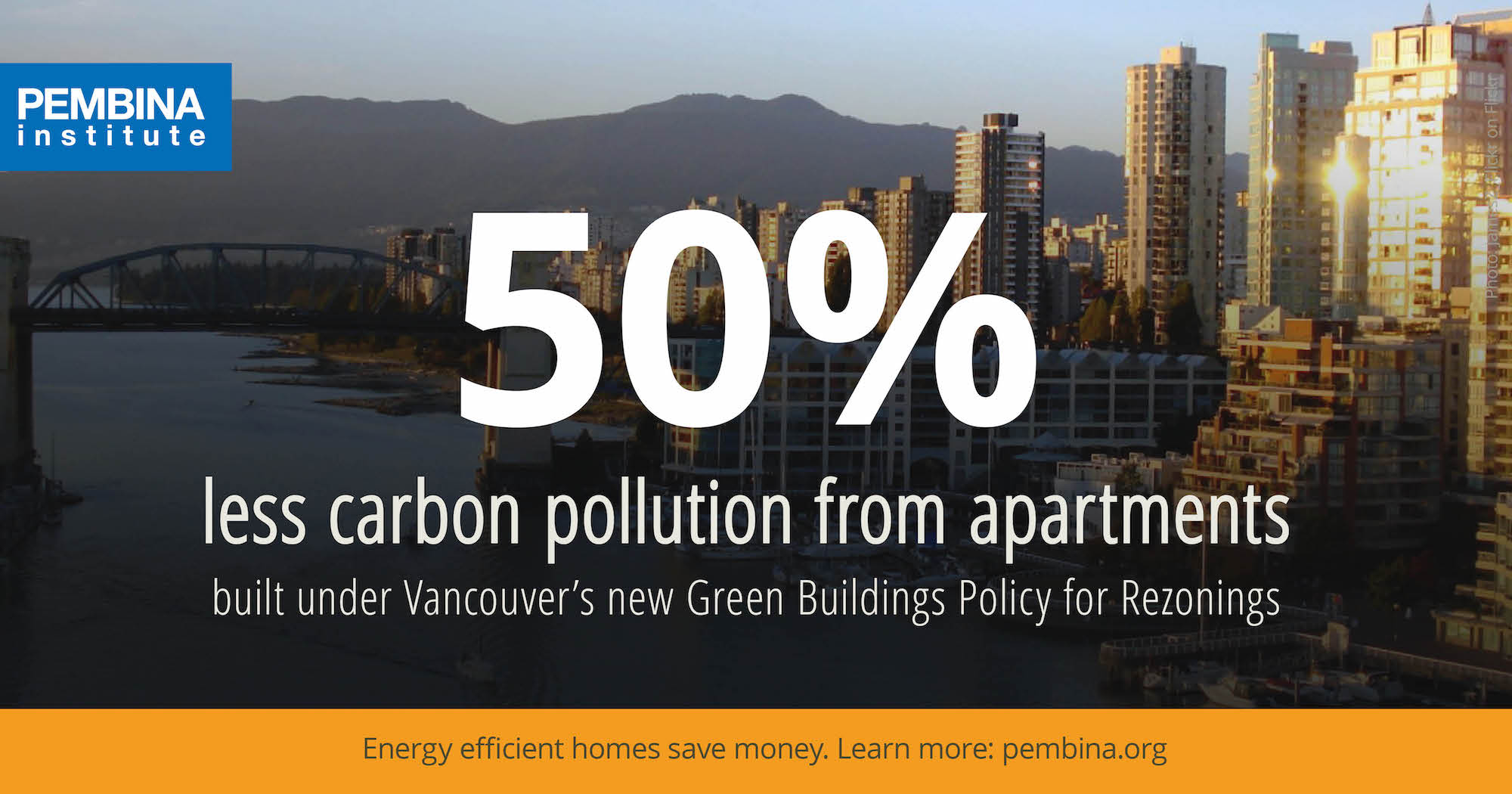That the City of Vancouver and FortisBC have agreed to collaborate on climate action is positive news. It is heartening to see FortisBC collaboratively engage to explore its role in the low-carbon economy. How far this new way of thinking has been integrated will be revealed on December 14, when the utility releases its 20-year plan for its natural gas business.
Vancouver’s Renewable City Strategy aims to see all energy used in the city derived from renewable sources by 2050. A memorandum of understanding, released by the City and FortisBC on November 24, outlines a set of concrete actions to be undertaken over the next five years. The most promising aspect of this non-binding deal is that it opens the door to jointly explore the future of gas utilities in the low-carbon economy.
In the agreement, FortisBC announced its intention to develop new energy efficiency rebates aligned with the B.C. Energy Step Code. This is a welcome development, as it will provide further encouragement for local governments and builders to adopt these higher performance building standards.
There is an opportunity to be more transformative, were the City and FortisBC to work together with B.C. Hydro and the Ministry of Energy, Mines and Petroleum Resources to incentivize the highest steps of the Energy Step Code. To meet our goal of having all new homes be net-zero energy ready by 2032, we must start to create the demand for the high performance components and services that will be required to deliver this at scale. (Net-zero energy ready buildings are so efficient they could generate their annual energy consumption with renewable sources on site.)
The City, for its part, agreed to create an alternative compliance path for its building bylaws and policies that references the B.C. Energy Step Code. This leverages the strength of the Step Code, which offers a shared framework that utilities and cities can use to incent and regulate the energy efficiency of buildings. It also exposes the City to the Step Code’s weakness: it offers no incentive for builders to install systems that use low-carbon fuels (electricity or renewable natural gas) over polluting ones (fossil gas or heating oil). The City’s Zero Emissions Building Plan addressed this weakness by setting explicit carbon reduction targets for new buildings. This elegant solution lets industry find the best way to meet the goal and reward builders that connect to low-carbon systems.
For this new compliance path based on the Step Code, the City will need to increase the level of efficiency required to ensure buildings meet the desired carbon reductions. This may, however, come at a higher construction cost. Other local governments in B.C. face this challenge as well. The solution to this problem is simple: keep the best of both, and include a carbon metric in the Energy Step Code.
The two parties have also agreed to advance a pilot project for deep energy retrofits of commercial buildings (think extreme makeover for buildings to reduce energy use in all systems). This will be an important capacity-building project; meeting our climate targets requires significantly reducing emissions from existing homes and buildings. Our hope is this pilot will identify a package of integrated measures leading to significant energy and carbon reductions, which can then be rolled out systematically across a certain class of buildings.
The agreement describes other projects, such as developing more low-carbon energy systems (e.g. geothermal heating), increasing training and safety of gas installations, exploring the potential role of natural gas for transportation (most promisingly, for marine shipping, a large emissions source with few low-carbon alternatives), and increasing the supply of (and demand for) renewable natural gas.
These are all steps in the right direction, and indicate a positive shift in FortisBC’s willingness to discuss its role in climate action. But is this step sufficient? Meeting the City’s and the Province’s target of a 80% reduction in carbon pollution by 2050 will require phasing out fossil fuel use in most buildings. To stay on track, we need to reduce carbon pollution from our homes and buildings by half by 2030, and that means burning a lot less natural gas. This has concrete implications for infrastructure investments and business development decisions made today by our gas utility.
On December 14, FortisBC will present its long-term resource plan to the B.C. Utilities Commission. The critical question awaiting an answer: if we are to reduce building emissions by half in the next 12 years, what investments should the gas-distribution company make to protect its shareholders and serve the public interest?
The City and FortisBC’s deal is a good first step. We hope to see the rest of the path laid out in FortisBC’s long-term plan.
Tom-Pierre Frappé-Sénéclauze is a senior advisor with the Buildings and Urban Solutions Program at the Pembina Institute, Canada's leading clean energy think-tank. He lives in Vancouver.
This op-ed originally appeared in the Georgia Straight on December 8, 2017.











